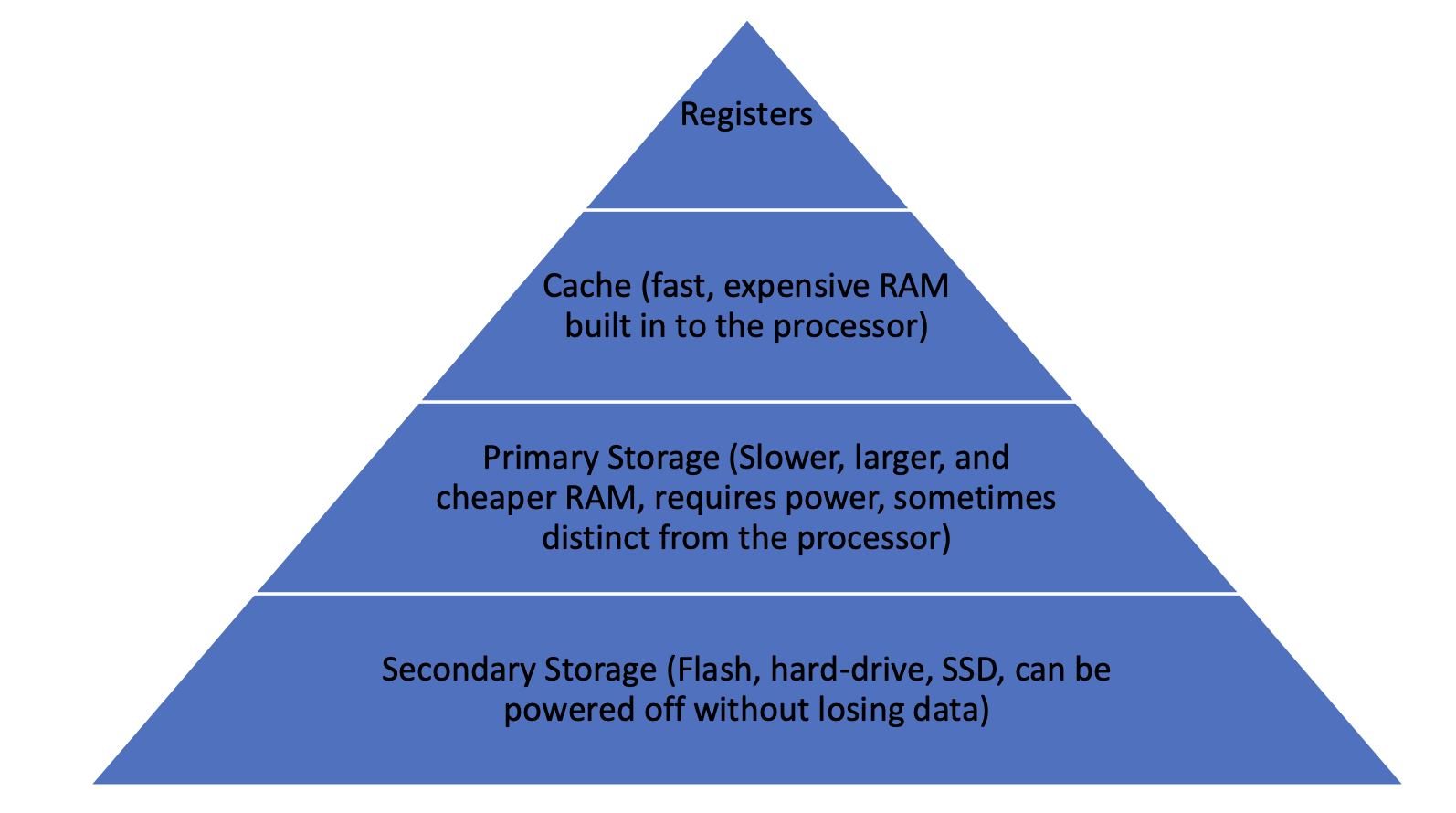The memory hierarchy:

- Registers – extremely limited memory locations built into the CPU itself
- Only a few dozen bytes of space
- Store intermediate results without having to send those results back and forth to RAM
- Special functions – storing return addresses for function calls
- Cache
- Not available on all processors
- Store frequently used data in extremely fast memory
- Also reduces the amount of time spent requesting stuff from RAM
- RAM
- “Primary storage” – main location CPUs use to access code and data while running, much faster than permanent secondary storage
- Secondary storage
- Slow, permanent memory
Producer/Consumer Model
Why do we have a hierarchy at all? CPUs consume data, memory produces data. CPUs are very fast compared to memory; if the consumer (CPU) can’t get the product fast enough, there is a bottleneck. Thus, the hierarchy exists to reduce the effect of this bottleneck.